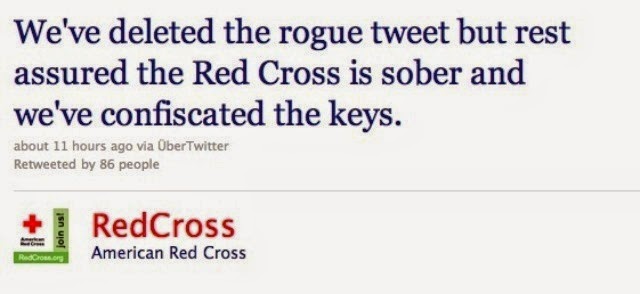Last month, Fast Company ran a piece entitled "Crazy Ways Top Creative Pros Landed Their Dream Jobs". One of the ways mentioned was to "Always Be Selling...Yourself.", the article went on to cite the rather peculiar hiring practices of Jason Peterson, chief creative officer for the Chicago-based branding agency Havas. Peterson hires based on Klout score, an action he defends by stating, "If you can't do it for yourself, you can't do it for my clients." (Greenfield, 2015) To some degree he may have a point, but some of the world's best marketing executives are likely not doing what needs to be done to achieve a high Klout score - they just might a bit too busy to brand themselves - and certainly some of the folks out in Hollywood with ridiculously high Klout scores are in fact achieving those inflated scores by having a team keeping them in the extremely important (to them and their careers) social media spotlight. So, who has "real" Klout? Darren Rovell.
 |
| Darren Rovell at a Northwestern University basketball game on "social media night" |
Rovell, who technically holds the title of "sports business analyst for ESPN", is a TV/Radio/Online personality with a deep following on and off the air. Over the years he has amassed almost 575,000 followers on Twitter (+Darren Rovell), his preferred form of social media engagement. He routinely breaks stories that interest the public and throws in plenty of Tweets that shock, entertain, humor, and amuse. Hell, the guy even re-tweeted something I once posted about a California beer brewed with organic bacon (that led to a nice little bump in my miniscule Twitter fandom). Like many public personalities that have a big voice in their industries, Rovell has caused controversies through his social media lens. He rarely apologizes when he offends (or happens to not get things "totally" correct in a story) and he's a guy that plenty of people love to hate but he also knows how to carry a following. Rovell posts just the right amount, varies his subject matter, and keep his audience interested. Oh yeah, he also interacts with some of the biggest names in sports and entertainment in a weekly basis.
 |
| Rovell's Tweets cover everything but breaking sports news to the latest sneaker release |
So, what about his Klout score? Well, Darren is doing pretty well if you want to judge a man based on a score that means very little to anyone other than the folks that actually run Klout. Currently, he holds an impressive score of 85. That puts him in the elite 2-3% range when it comes to Klout. Whereas he's no Justin Bieber (and thankfully nobody else is, we only need one), he's holding quite a bit of social media influence cred. As for me? Not quite as much.
I should probably preface the next couple of paragraphs by stating that I am a Klout skeptic. The fact that it only sources your influence through Facebook (your personal page no less) and/or Twitter means it lacks the ability to truly measure you. Also, and this where I really don't see the validity of Klout, if you want to increase your Klout score you'll need to play by their rules and post to their website to help drive traffic their way - which helps earn them money. If Klout allowed you to somehow describe and submit all of your social media presence (and tabulated it through some fancy understandable algorithm) and then simply gave you a number I'd have a but more respect for it. I feel that Klout wants people to think this is how its done...and that's where I'm a skeptic.
That said, I went and checked out my score on Klout. I chose to use the Twitter handle I have for my website (@CraftCans) and the magic number I received was 49. Not bad. I guess people do actually care what I say about canned craft beer. Not content with just that one number and source, I logged out and then used my Facebook account. That magic number? 10. So, I'm left a bit confused as to what it all actually means. For now, I'll continue to personally measure and assess my social media worth and influencing power based on the number of hits on my website, Twitter followers and re-tweets, and Facebook interaction. Oh, and don't worry Jason Peterson, I won't be applying for a job at Havas anytime soon.
Sources:
Greenfield, R. (2015, February 9). Crazy Ways Top Creative Pros Landed Their Dream Jobs. Retrieved March 4, 2015, from http://www.fastcompany.com/3041935/how-i-get-it-done/crazy-ways-top-creative-pros-landed-their-dream-jobs










